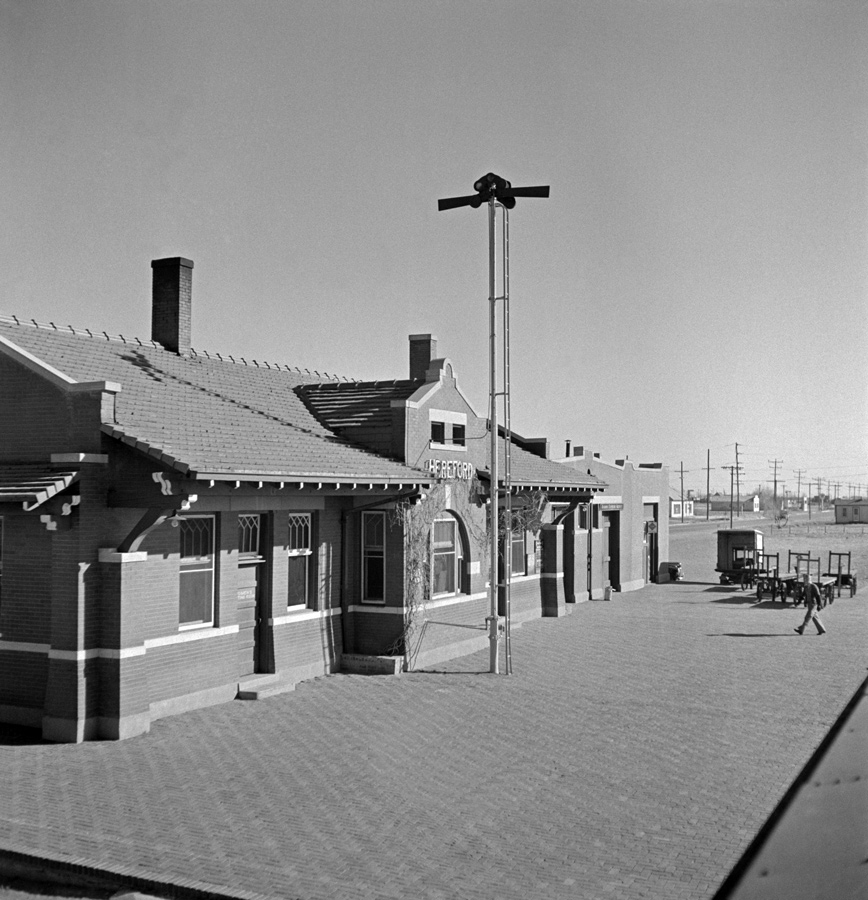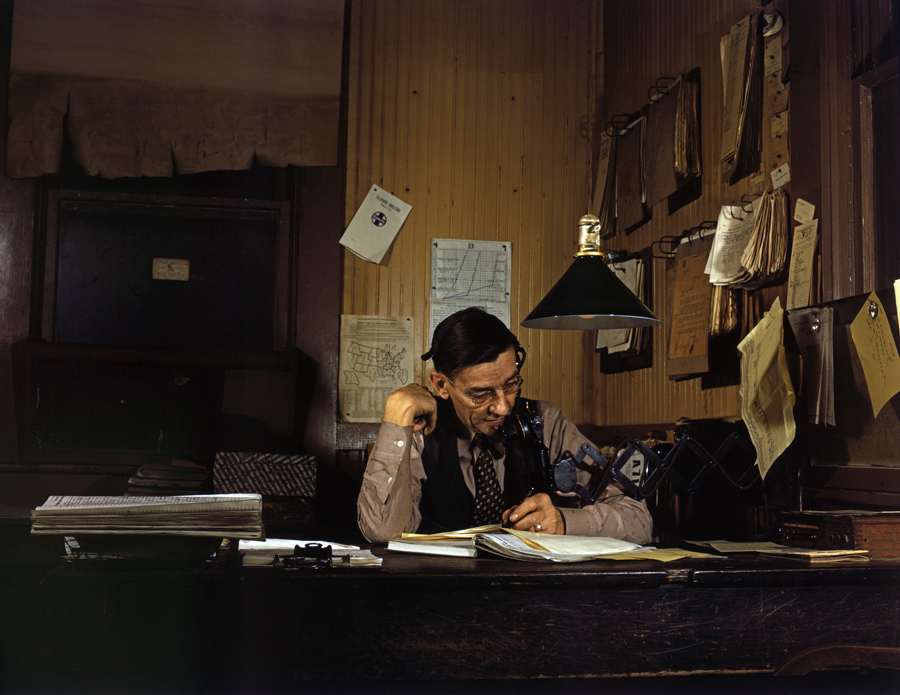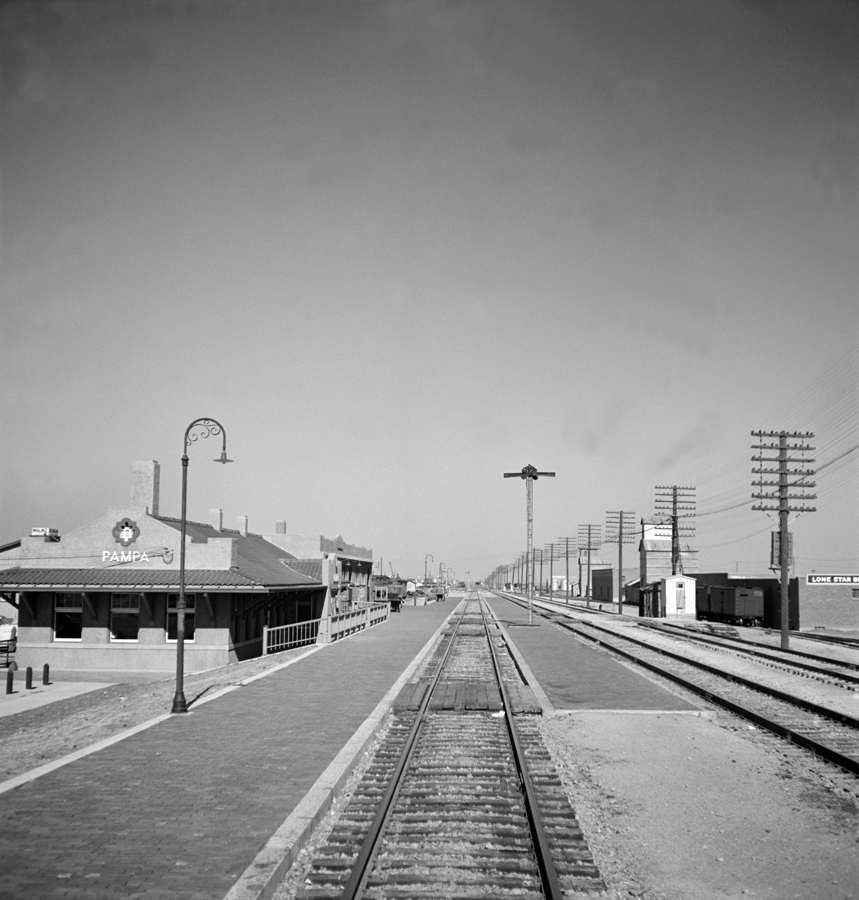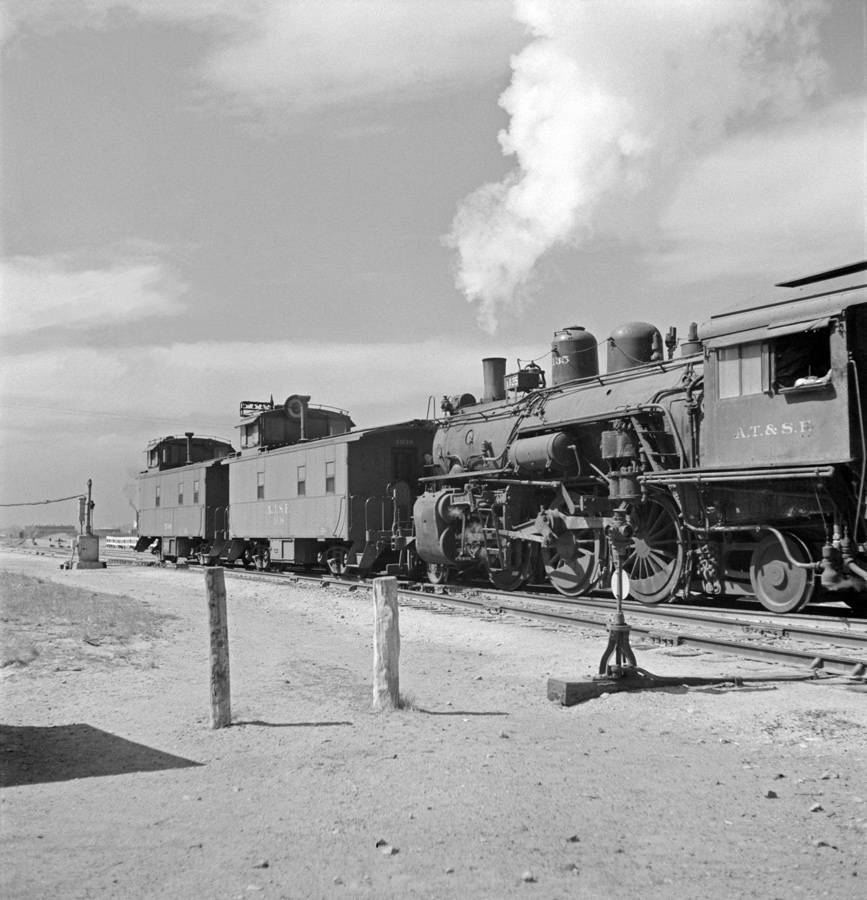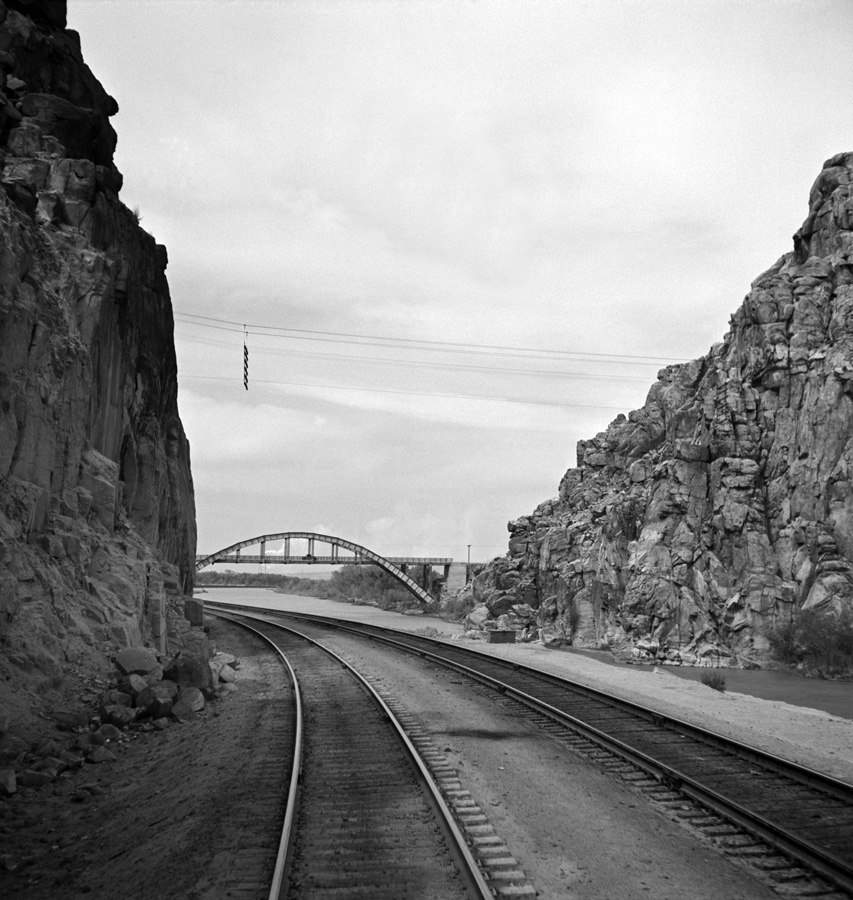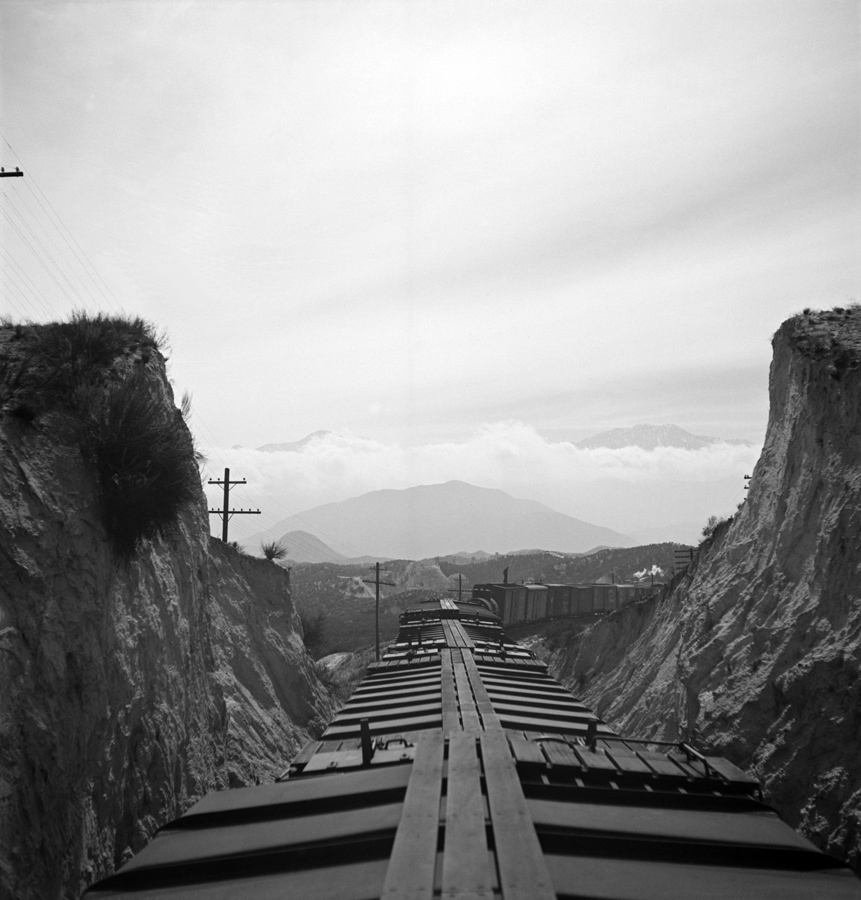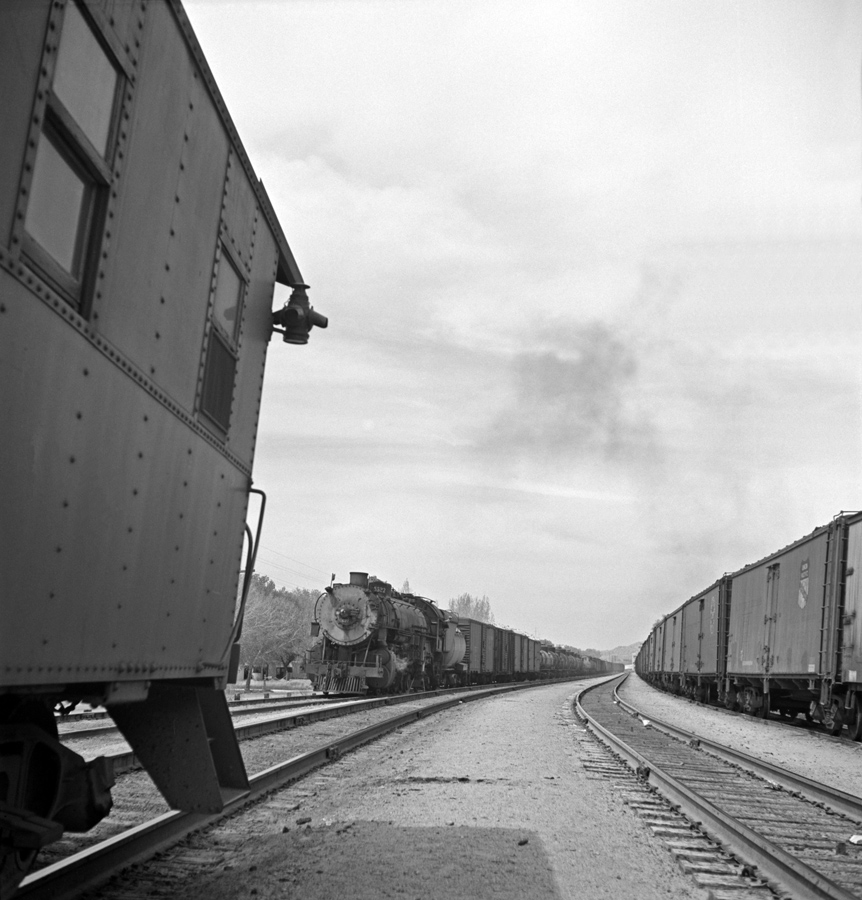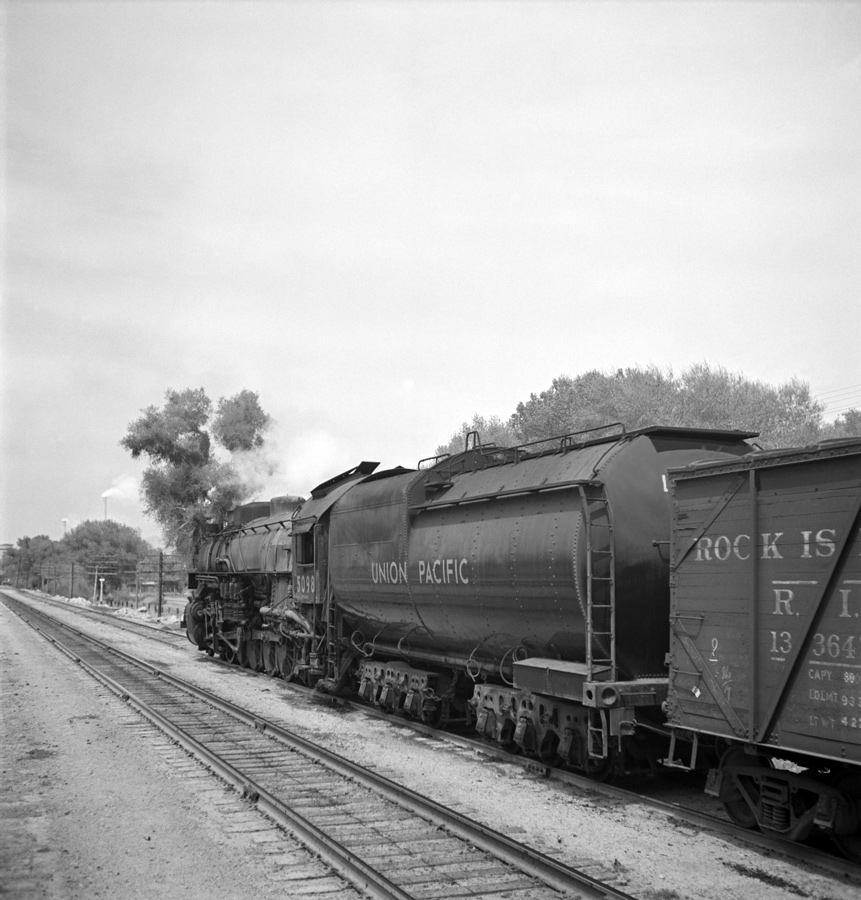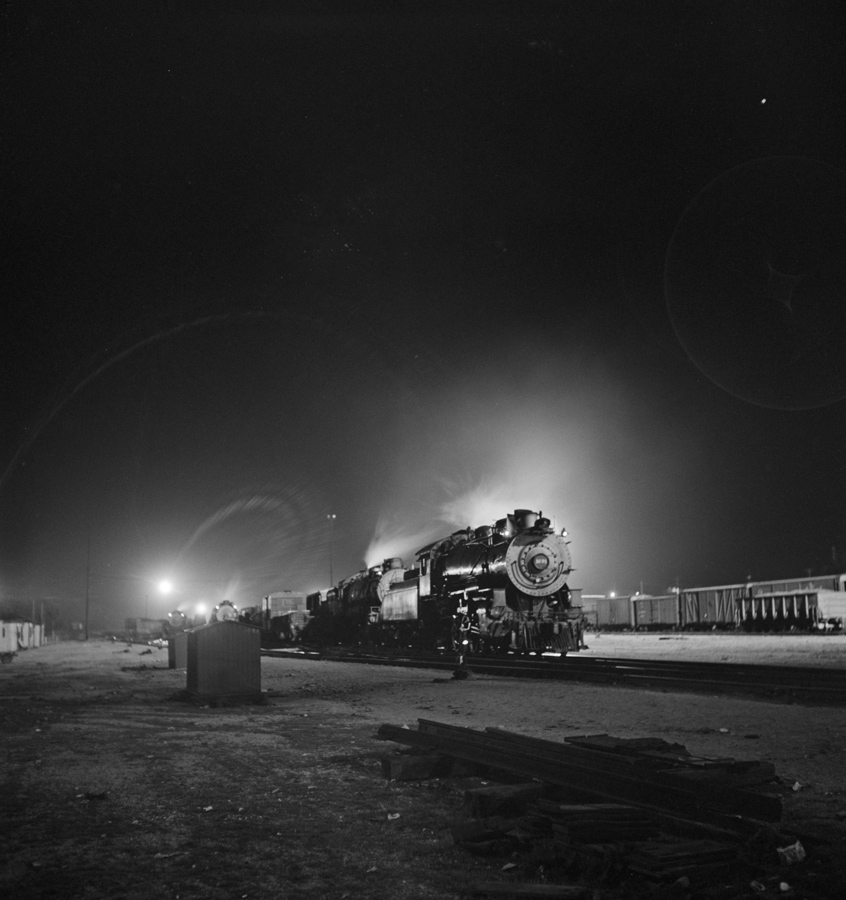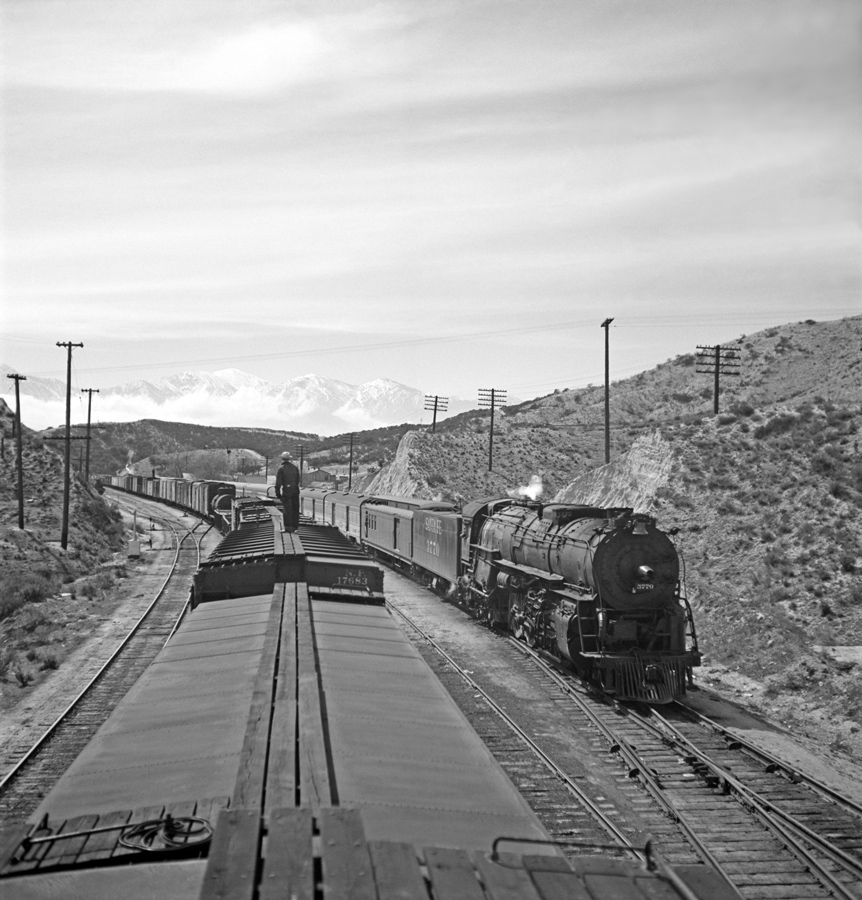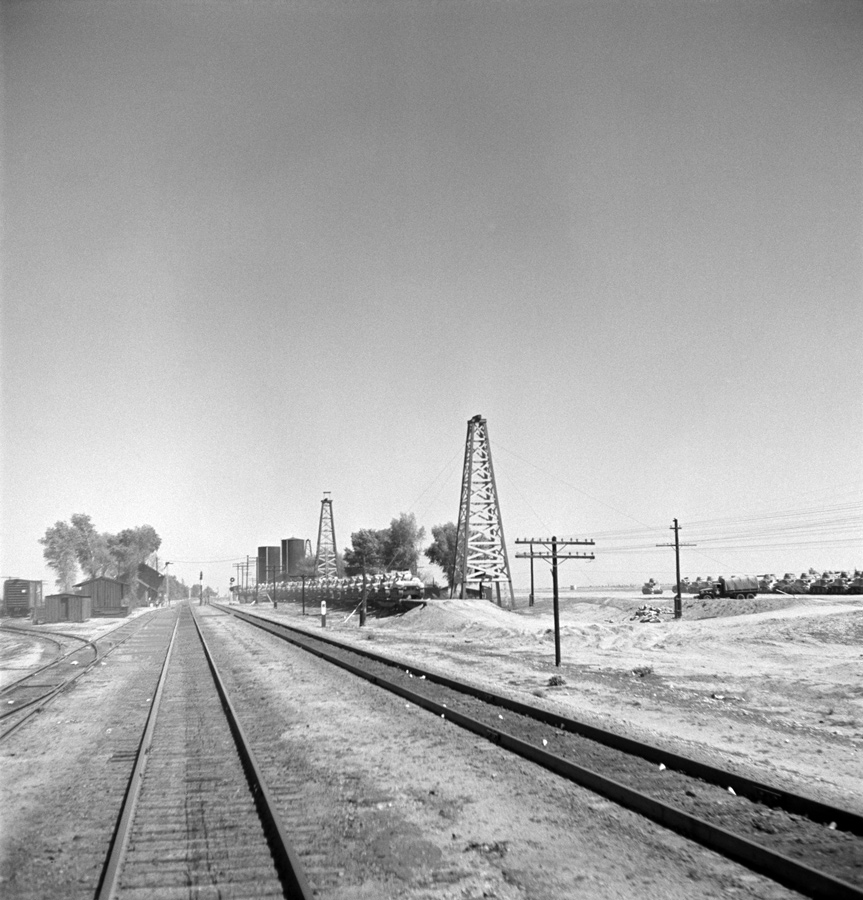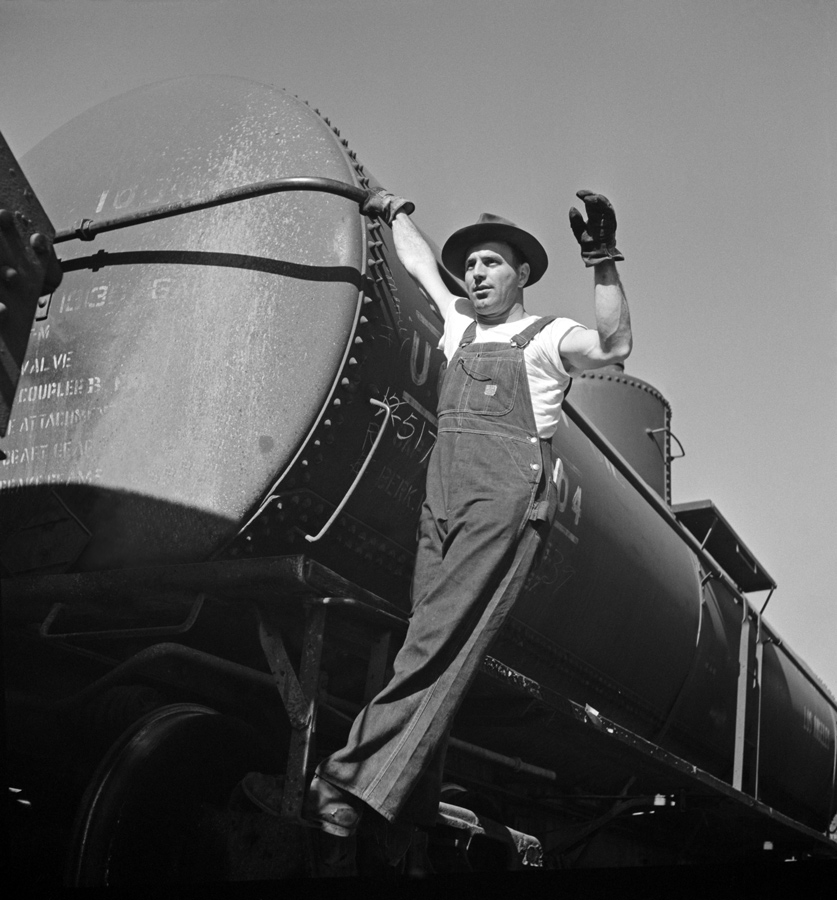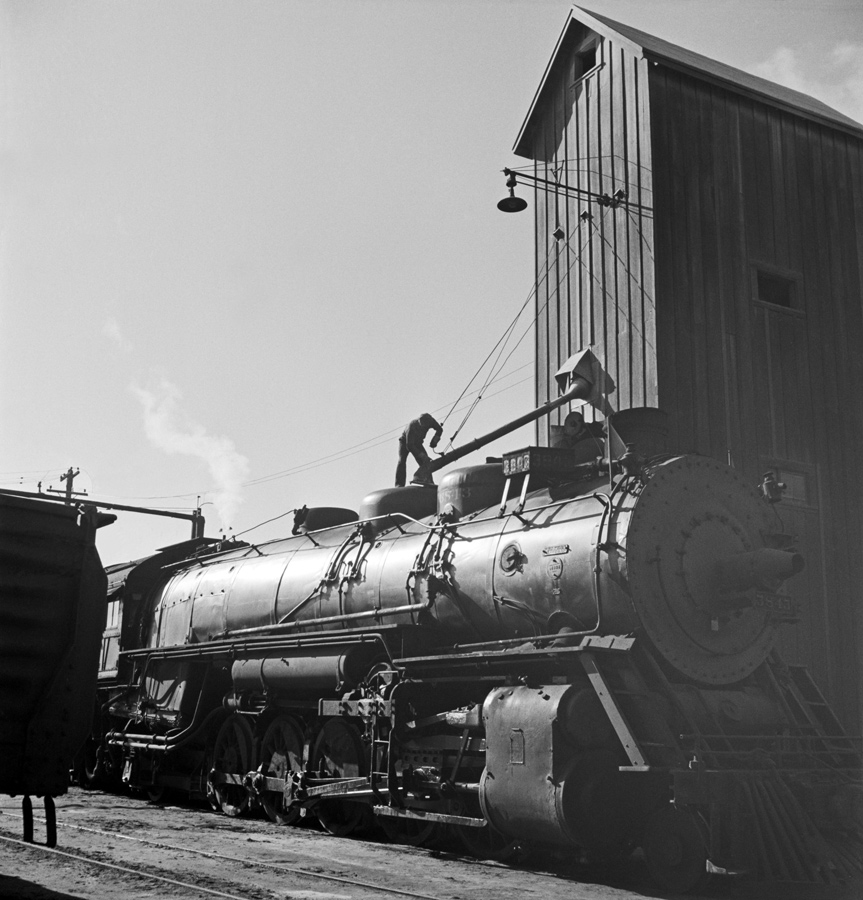Jack Delano is on the move again, and his train is passing by the depot in Hereford, Texas. The Santa Fe had quite a few designs for their train stations, some of masonry construction and others of wood. But they all seemed to have certain elements that made them distinctly Santa Fe. Here I particularly like the sloped sides of the bottom half of the structure’s brick walls, an architectural feature I’ve seen on several Illinois Central depots (Hammond, Louisiana and Brookhaven, Mississippi come to mind).
Since this is March of 1943, the vine growing on the bay window has gone dormant, likely a good thing as it appears to cover the station name. The building section to the right of the main structure is the Railway Express Agency’s facility. The train order signal displays the need for crews in each direction to pick up orders for their trains.
